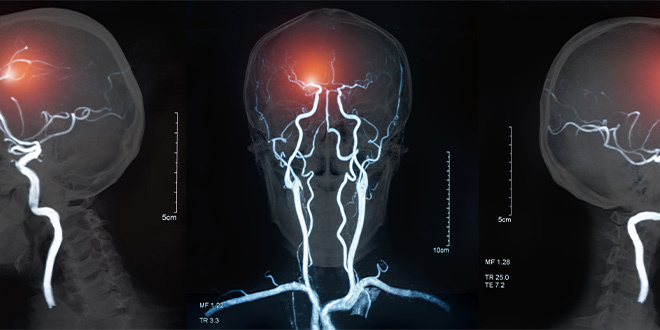
A lot of what we have learned about how our brain controls our sex lives comes from research done on animals, typically rodents and small mammals. Although the use of animal models is obviously limited given the significant differences between animal and human sexuality, there is a relationship between the particular brain regions implicated in animal research and observations in humans.

The temporal lobes and a structure within them called the amygdala could arguably be referred to as your sexiest brain bits. By “sexiest,” I mean the parts of the brain that have most commonly been associated with changes in sex drive and behavior in both animals and humans.
In 1888, scientists Sanger Brown and Edward Schäfer were conducting experiments on rhesus monkeys. They removed both temporal lobes of these monkeys in an operation called a “bilateral temporal lobectomy.” They reported that one female monkey who had this surgery showed “uncontrollable passion on the approach of other monkeys, so that it is now necessary to shut her up in a cage by herself.”
Fifty years later, German psychologist Heinrich Klüver and an American neurosurgeon Paul Bucy did temporal lobe resections (that is, removal of parts of the temporal lobe) during behavioral experiments with rhesus monkeys, and they unexpectedly discovered an intriguing syndrome that now bears their names: Klüver-Bucy syndrome.
The symptoms of Klüver-Bucy syndrome are visual agnosia (an inability to recognize objects by sight), hyperorality (a tendency to examine all objects by mouth), hypermetamorphosis (an irresistible impulse to react and attend to visual stimuli), emotional changes (an absence of fear and anger, often referred to as the “taming effect”), changes in dietary habits, and hypersexuality (a dramatic increase in sex drive). This research was the first to demonstrate that the temporal lobes are involved in controlling sexual behavior.
The monkeys manifested hypersexuality about three to six weeks after they had undergone bilateral temporal lobectomy, and it involved both a quantitative increase and qualitative change in sexual behavior. They engaged in the indiscriminate mounting of animals of the same and the opposite sex, and of inanimate objects. They had sexual intercourse for up to half an hour, only to mount again immediately after dismounting. In other words, they wanted sex all the time, and in any way they could get it.
These behaviors were not seen in monkeys that had undergone unilateral (one-sided) temporal lobectomy, or in monkeys that had not been operated on at all. Further studies of primates, cats, and rodents focused on the amygdala; the destruction of both amygdalae in these animals revealed the same sexual changes that had been observed in rhesus monkeys who had been given bilateral temporal lobectomies. Subsequent reports of partial or complete Klüver-Bucy syndrome in humans then confirmed the temporal lobe’s role as one of our brain’s most important regions for sexual behavior.
The first published case of full-blown human Klüver-Bucy was in 1975. A 20-year-old man who had damage to both his temporal lobes due to herpes encephalitis, a rare type of brain inflammation, showed visual agnosia and prosopagnosia (inability to recognize faces), instead of the “psychic blindness” observed in monkeys with Klüver-Bucy syndrome, and placidity and flattened affect —that is, a general lack of emotional expression — as opposed to the monkeys’ loss of fear and anger.
In this case, the man’s sex drive increased, and his sexual orientation changed from heterosexual to homosexual preference. This is one common feature of the hypersexuality described in human Klüver-Bucy syndrome; the other typical feature is sexual disinhibition.
Human Klüver-Bucy syndrome has been reported in people with a range of neurological conditions, including herpes encephalitis, temporal lobe epilepsy, a stroke affecting bilateral temporal lobes, and Alzheimer’s dementia. What all of these conditions have in common is that they involve the temporal lobes. Every human diagnosed with the syndrome has bilateral temporal damage, and in most cases, the damage includes the amygdala. This is certainly the case if hypersexuality is a feature, and echoes what has been found in animal research.
Thirteen different nuclei make up the amygdala, and each nucleus interconnects with different brain regions, including the olfactory bulbs (involved in processing smells) and the hypothalamus. The hypothalamus, in turn, regulates our endocrine system (hormones) and our autonomic nervous system (bodily functions such as heart rate and breathing).
Each amygdala is also connected to other brain regions, such as the frontal lobes, including the medial, orbital, and prefrontal regions. These rich interconnections are important to bear in mind when we consider the amygdala’s role in sexual behavior. It does not act alone; rather, it is part of a wider “sexual neural network.”
The post Brainsex: Which Bits Do What? appeared first on Volonté .
Intimate Tickles found this article quite interested, and we thought you might to. We give all the credit for this article to Stuart Nugent. Click Here To Read This Article From It's Original Source